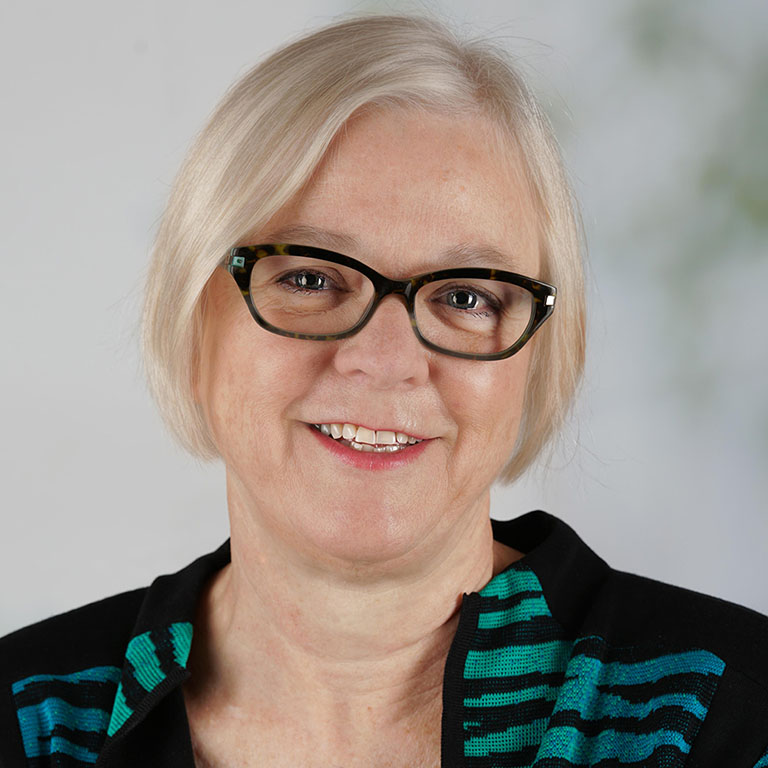10-24-2019
Not at your best with scientific terminology? Don’t let that keep you from understanding. If any of our researchers’ vocabulary throws you for a loop, just click on this glossary to see if you can find a definition.
10-24-2019
Not at your best with scientific terminology? Don’t let that keep you from understanding. If any of our researchers’ vocabulary throws you for a loop, just click on this glossary to see if you can find a definition.


Q: How did you find out about the Komen Tissue Bank, and why did it interest you?
We have been doing research using tissues from breast tumors, particularly in relation to the effects of risk factors on changes in the breast. Clearly, tumor tissue does not represent the normal breast prior to cancer, but we were unaware of availability of normal breast tissue for use in research. A colleague of mine became aware of the Komen Tissue Bank through conversations with Dr. Ken Nephew. This seemed like the perfect resource for trying to understand how risk factors, particularly having children and not breastfeeding, may influence the etiology of more aggressive breast cancer (tumors that do not express the estrogen receptor [ER negative]).
Q: What types of samples have you obtained from the Komen Tissue Bank?
We obtained fresh frozen breast tissue from which we are extracting DNA and RNA, and also whole sections of fixed tissue to be able to stain for specific proteins. We requested samples from African-American women, with equal numbers of women who never had children, those who had children and breastfed, and those who gave birth but did not breastfeed.
Q: What do you hope to discover/have you discovered in your research?
Using tissue from breast tumors from African American women, we previously found that there were differences in changes in genes (DNA methylation) in tumors depending upon whether or not they were ER negative or ER positive. One of the most different genes was FOXA1, which appears to be involved in suppressing ER negative type cell precursors. We were surprised to see that these differences were greatest depending upon whether or not women had children. Because having children and not breastfeeding is associated with more aggressive ER negative breast cancer, we want to see if these reproductive factors result in changes to genes in the normal breast, which, with additional events, could results in either ER negative or ER positive breast cancer
Q: How will the Komen Tissue Bank samples help with your research? What value do they add?
The Komen Tissue Bank will allow us to address this key question, which we could only hypothesize about, but not test, with the breast cancer tissues that we had. We believe that it is a priceless, incredibly generous gift for women to consent to providing breast tissue, and are very grateful to be able to access these tissues to address our research questions.
Q: Please explain in lay terms how your research might impact treatment options for BC patients in the future?
Our research is primarily aimed at cancer prevention. We are hoping that this research will help us understand how breast cancers arise, and what contributes to whether patients develop ER positive or ER negative breast cancer, which is more difficult to treat and has poorer prognosis. Understanding these causes can lead to prevention strategies. For example, findings may solidify the importance of breastfeeding to reduce the risk of ER- breast cancer, providing justification for developing educational programs aimed at populations at risk. A longer term goal of our study is to identify targets for chemoprevention that would mimic the protective effects of breast feeding.
Q: Our readers would love to know some personal information about you. Tell us anything at all that you feel comfortable talking about.
I returned to school fairly late in life and obtained my PhD when I was 45, after working in restaurants for a number of years and raising two children (it’s never too late!). I am now passionate about breast cancer research and really enjoy working – thinking, reading and writing to continue our work trying to understand the causes of breast cancer for prevention. Up until a couple of years ago, we lived on several acres outside of Buffalo, NY, had fruit trees, chickens and grew a large organic garden. I love cooking food that we have grown, and freezing and canning the rest. We have two grandsons who are growing up way too fast.